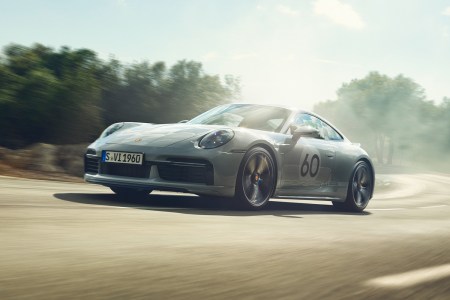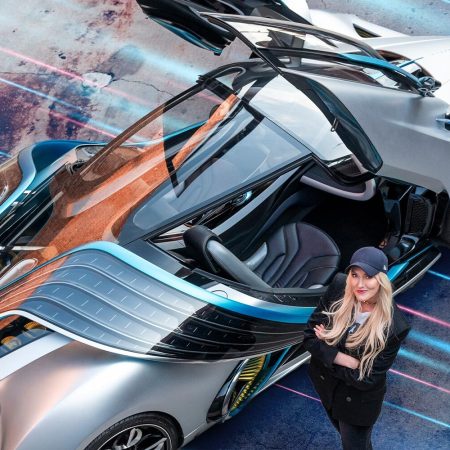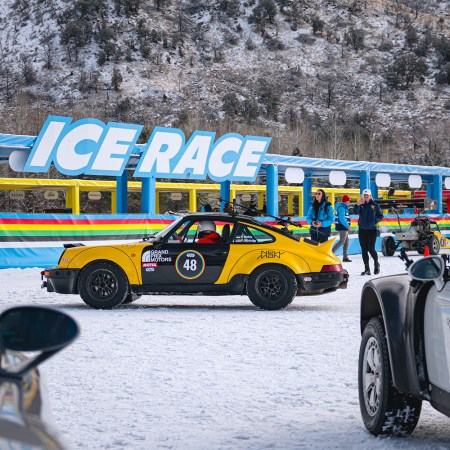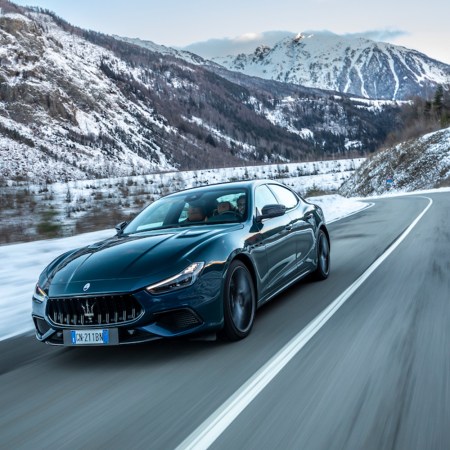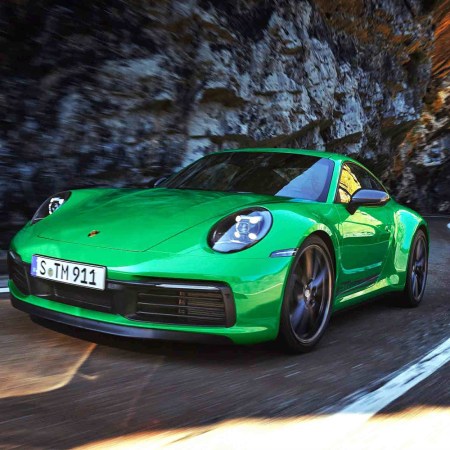When the 720S debuted back in 2017, it was a coming-of-age moment for McLaren’s fledging road car brand. While efforts like the 570S and 650S had already proven that the British automaker was capable of producing high-performance vehicles that could sit comfortably alongside established players from the likes of Porsche and Mercedes-AMG, the 720S marked a significant step forward not only in terms of dynamic capability, but also drivability, aesthetics and comfort. Ferrari and Lamborghini had long enjoyed their reputation as the supercar standard-bearers thanks to decades of lust-worthy machines, but with the 720S, McLaren suddenly had a compelling argument of its own.
The performance car realm has changed substantially in the years since, though, and as the successor to the 720S, the new 750S finds itself in a landscape now populated with sophisticated all-wheel drive systems and a range of monstrously powerful EVs. On paper, this rear-wheel drive sports car’s 740-horsepower twin-turbocharged 4.0-liter V8 might seem underwhelming at a point in time when there’s a growing range of factory-produced machines with horsepower figures that venture well into quadruple-digit territory. But McLaren is a company that has a habit of focusing on the long-established fundamentals of sports car design rather than chasing the latest hype. As a result, the 750S might just be the most thrilling road car that money can buy today.
You’d be forgiven for mistaking the 750S for a 720S at a glance, as the two share a carbon-fiber monocoque tub as well as the majority of their bodywork; but don’t assume that the designers and engineers at Woking have been resting on their laurels. Though ultimately more evolution than revolution, the 750S builds on the strengths of its predecessor while incorporating some of the performance enhancements of the track-tuned 765LT as well as technologies first seen in the Artura.
| Vehicle | 2024 McLaren 750S |
| Starting Price | $324,000 |
| Price of Model Tested | $449,790 |
| Vehicle Type | Two-passenger coupe |
| Engine | Twin-turbocharged 4.0-liter V8, 740hp, 590 lb-ft |
| Fuel Economy | 15 city / 19 highway / 17 combined |
| Availability | As of spring 2024 |
Combined with a range of model-specific upgrades and a dry weight of just 2,815 pounds, the 750S holds the title of McLaren’s lightest and most powerful series production car to date. By the automaker’s estimate, it’s 425 pounds lighter than its closest rival, the hybrid V6-powered Ferrari 296 GTB.

McLaren has traditionally taken a more clinical approach to automotive design than its Italian competitors, but the Brits have made strides here as well. Although the 720S never failed to impress when it came to responsiveness and its ability to pile on speed with incredible urgency, the V8’s soundtrack lacked some of the emotional impact that’s inherent to the supercar formula. To address this shortcoming, McLaren has outfitted the 750S with a new center-exit exhaust inspired by the P1 hypercar, a system which bestows the boosted V8 with a distinctive crescendo as the powertrain climbs through the gears, while a volley of off-throttle crackles and pops add to the aural drama.
This Nostalgic Porsche Doesn't Make Sense, Until You Drive It
The Sport Classic isn’t the most powerful 911 available, but it might be the best
Peak figures of 740 hp and 590 lb-ft of torque represent gains of 30 hp and 22 lb-ft over the 720S, improvements which come as a result of increased boost pressure from revamped engine management software, along with lightweight pistons borrowed from the 765LT. The mid-mounted V8’s grunt is routed to the rear wheels through a seven-speed dual clutch gearbox with a 15% shorter final drive ratio, too, a combination which catapults the traction-limited 750S to 60 miles per hour from a standstill in 2.7 seconds. Keep your foot to the floor and the 750S will reach 124 mph just four and a half seconds later on its way to a quarter-mile time of 10.1 seconds and a top speed of 206 mph.
The spectacular pace is complemented by a larger active rear wing that’s said to provide more downforce and greater aerodynamic balance than the 720S. Revised suspension geometry is also combined with new dampers and lightweight springs (the latter of which are softer up front and stiffer at the rear versus the 720S) to improve not only cornering balance, but also steering feedback and ride quality.

Inside, the 750S boasts a new digital gauge cluster that incorporates chassis and powertrain controls into the upper corners of the binnacle. Similar to the setup found in the Artura hybrid, it provides the driver with the ability to make adjustments to features like suspension stiffness, transmission behavior and stability control without taking one’s hands off of the steering wheel. The change allowed McLaren to ditch the slightly convoluted vehicle controls located on the 720S’s center stack and install the McLaren Control Launcher in its place. A first for the brand, the MCL lets the driver call up their favorite combination of aero, handling, powertrain and transmission settings with a single button press. A new infotainment system with sharper graphics and Apple CarPlay compatibility is also onboard; while I noted that there are still a few bugs to iron out in its software, the system scored points for fast input response and an intuitive menu layout.
My tester was also outfitted with the 750S’s new, optional super-lightweight carbon-fiber racing seats. While they certainly make a visual impression, I actually found them to be a step backward from the 765LT’s standard seats in terms of both comfort and lateral support, which is a bit of a bummer considering how ergonomically well-sorted this car is otherwise.
You might assume that you’d have to make some big usability concessions in order to drive something that looks like this, but much like its predecessor, the 750S is surprisingly easy to live with even in normal, everyday driving situations. Outward visibility is remarkably good in virtually every direction, the transmission is well behaved at low speeds, and even with track-focused Pirelli P Zero Trofeo R tires wrapped around the new 10-spoke lightweight wheels, McLaren’s linked-hydraulic suspension dispatches imperfect pavement like a modestly sport-tuned luxury sedan. And thanks to a comprehensively re-engineered nose-lift system, the front end of the 750S can be raised up to clear speed bumps and steep driveway aprons in just four seconds — less than half of the time required by the feature on the 720S.

A trek out to my favorite canyon roads in Angeles National Forest allowed the 750S to stretch its leg in its natural habitat. Unencumbered by commuter traffic, the new exhaust brought a welcome sense of occasion to the proceedings, while the shorter gearing managed to make the 750S feel even more urgent than the shockingly quick 720S.
But McLaren is keenly aware that acceleration is only one piece of the performance puzzle, so it should come as no surprise that the 750S’s ability to turn and stop are just as stunning. Grip in the corners is seemingly endless, while my tester’s Track Brake Upgrade — an $18,050 option that utilizes ceramic discs and monoblock calipers derived from the million-dollar McLaren Senna — delivered unflappable stopping power with excellent pedal feel throughout my most spirited jaunts.
Even when driven with purpose and steadfast concentration, it’s not hyperbole to say that the vast majority of would-be owners will run out of bravery before this car runs out of capability. While some performance vehicles may seek to prove their worth on the spec sheet, the McLaren 750S does so on the tarmac.
This article was featured in the InsideHook newsletter. Sign up now.

